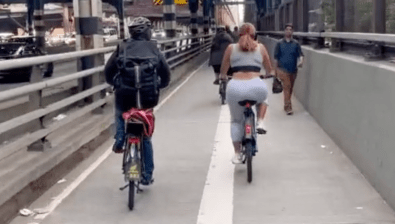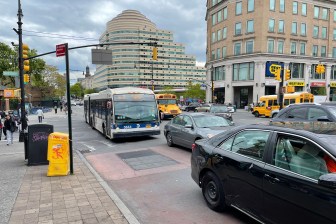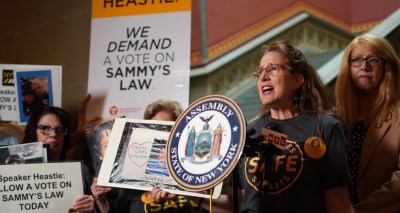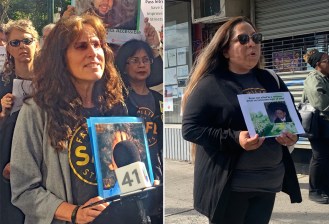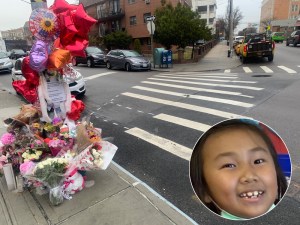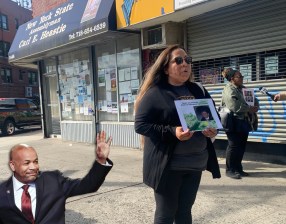NYU Report: NYC’s Exclusive Busways Shouldn’t Be for Emergencies Only
The city and state need to shift gears to create a more resilient transportation network in the wake of Hurricane Sandy, a group of New York University transportation researchers argue in a report released this morning. Chief among their recommendations: New York must get serious about Bus Rapid Transit and create permanent, physically-separated transit lanes to keep bus riders from getting stuck in traffic.

With the subways unable to cross the East River due to power outages and flooding, “the exceedingly intense traffic gridlock that the city experienced was reminiscent of scenes from Sao Paulo and Jakarta: emerging megacities that struggle to provide adequate capacity,” write authors Sarah Kaufman, Carson Qing, Nolan Levenson, and Melinda Hanson of NYU’s Rudin Center for Transportation Policy and Management.
A wide variety of transportation options picked up the slack in the storm’s wake. Privately-owned commuter vans filled gaps in transit service, the East River Ferry doubled its typical fall weekday ridership to more than 7,400, and 30,000 bike commuters — more than double the average — crossed the East River bridges.
A make-shift system of express buses served the most people, with subway passengers transferring to buses at three locations in Downtown Brooklyn and Williamsburg. At the two transfer points in Downtown Brooklyn, the MTA loaded 3,700 passengers per hour onto the Manhattan-bound “bus bridge,” which the report hails as “New York’s first truly exclusive busways.” The report lauds interagency cooperation after the storm, noting that NYPD’s bus lane and HOV-3 enforcement played a critical role in keeping the way clear for bus riders.
While the long lines waiting for buses showed that “impromptu Bus Rapid Transit” can’t replace full subway service, the authors say the post-Sandy transport plan also illustrated how real BRT routes could enhance the city’s transportation options. As Capital New York noted last week, NYC’s Select Bus Service is a solid upgrade over conventional buses, but doesn’t perform well enough to qualify as Bus Rapid Transit.
The NYU report recommends that the MTA work with the city to implement dedicated bus lanes as a permanent part of the city’s transit mix. “If buses continued to have priority on bridges” and other busy corridors, the authors write, “large numbers of people could move through the city more efficiently.”
The report also makes other recommendations, including:
- Continued expansion of dedicated bicycle lanes, which are not as vulnerable to weather-related shutdowns, including on the Verrazano-Narrows Bridge, which would have allowed Staten Islanders to more easily access transit connections in Brooklyn during the gas shortage;
- Increased federal and state investment in the MTA, both for storm recovery and long-term upgrades; and
- Expanded use of the MTA’s adaptable maps and real-time data feeds to inform riders of outages and service changes.
